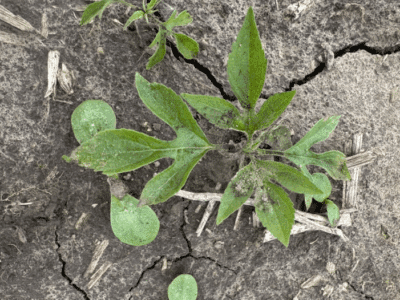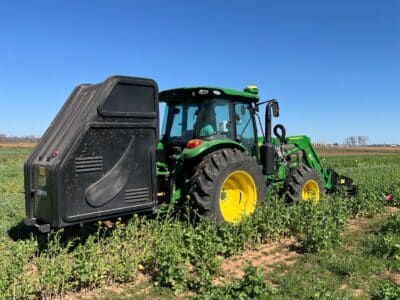Palmer amaranth requires a well-planned, integrated approach to management in order to keep it at bay and stop new plants from establishing. A recent multi-state study showed that tillage-based weed management programs are most powerful against Palmer when they combine a PRE residual herbicide program with deep tillage using a moldboard plow. Palmer amaranth is considered one of the most problematic weed management challenges in the midwest, south, and mid-Atlantic due to widespread multiple-herbicide resistance and its ability to threaten soybean yields. The study demonstrated how an integrated approach to weed management is necessary to stop Palmer from emerging and growing: using residuals and tillage together is more effective than utilizing any one management technique alone.
In the study, performed in Arkansas, Illinois, Ohio, Tennessee, Wisconsin, and Missouri, the researchers compared Palmer amaranth seedling emergence after deep tillage, conventional tillage, minimal tillage, and no-tillage. In these fields, they also compared the impact of two different herbicide programs: PRE residual + POST, and just POST with no PRE residual.
- Deep tillage: Fall moldboard plow and one pass with a field cultivator in spring
- Conventional tillage: Fall chisel plow and one pass with a field cultivator in spring
- Minimal tillage: One pass of a vertical tillage tool in spring
- No-tillage: paraquat burndown
Combining residuals and deep tillage had the largest reduction in pigweed emergence. The program that combined deep tillage with a PRE residual herbicide application showed a 97% reduction in pigweed species emergence, compared to the program that combined minimal tillage with no PRE. Overall, fields with deep tillage exhibited 62-73% less Palmer amaranth emergence in the spring compared to conventional, minimally tilled, and no-till fields.
Residual herbicide programs were very important for suppressing pigweed emergence. The inclusion of residuals to any tillage program reduced pigweed emergence by an average of 87% compared to programs that used no residual and only POST applications. This finding is similar to another study in Missouri in 2009 which also showed the importance of using residuals for glyphosate-resistant weeds. It found that a program of PRE followed by POST had 97-98% waterhemp reduction, compared to only 40% in a POST-only program (Legleiter et al. 2009). Including a residual of metoloachlor plus metribuzin provides better economic returns in weed control vs. POST-only programs when glyphosate-resistant weeds are present. PRE applications with residuals allow the field to be weed free and stay weed free after planting, which is very important for the pigweed species which emerge throughout the season.
The way that deep tillage suppresses pigweed is by burying the seeds deeply into the soil where they cannot germinate. The act of tilling mixes the top several inches of the soil and therefore moves weed seeds to different levels of the soil. Deeper tillage with a moldboard plow can result in moving surface seeds deeper in the soil than vertical tillage or a chisel plow. This has important implications for weed seed control, because many small-seeded weeds like pigweed cannot emerge unless the seeds are on or near the surface. In this study, moldboard plowing left only 28% of pigweed seeds in the top 2.5 inches of the soil where germination is likely, while the rest were buried deeper. In contrast, the no-till, minimal-tillage, and conventional tillage programs left 77-81% of pigweed seeds above 2.5 inches. The results of this study demonstrate how an integrated approach to weed management can be essential in controlling problematic or herbicide-resistant weeds, in contrast to a single herbicide or mechanical approach. It also points out the importance of residual herbicides for weeds that germinate throughout the growing season.
Integrating tillage and/or herbicides into a crop management plan are suitable options for all growers. While tillage is an effective weed management method, tilled fields are also more susceptible to soil erosion and runoff than no-till fields, may be lower in organic matter, and can have higher fuel and labor costs. Additionally, these herbicides cannot be used in organic systems. Therefore, growers must weigh the costs, benefits, and necessity of using tillage and residuals to manage Palmer amaranth on their individual operations.





























































































